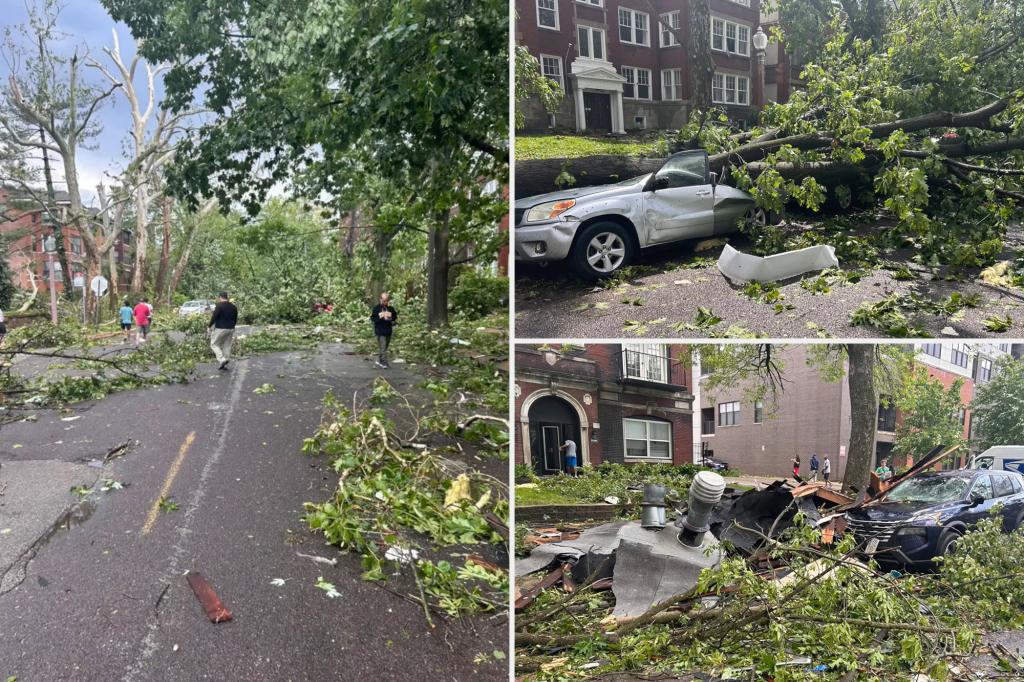Devastating Storms Strike St. Louis: Tornadoes and High Winds Claim Lives
A series of violent storms tore through the St. Louis region late Wednesday night, spawning multiple tornadoes and unleashing destructive winds that killed at least four people and left a trail of devastation. Emergency crews are now scrambling to assess the damage, rescue survivors, and restore power to thousands of affected residents. The National Weather Service (NWS) has confirmed at least two EF-2 tornadoes with winds exceeding 110 mph, which flattened homes, uprooted trees, and downed power lines across several counties.
Immediate Aftermath and Emergency Response
The storms struck with little warning, pummeling neighborhoods in St. Charles, Jefferson, and Franklin counties between 10 p.m. and midnight. First responders described scenes of chaos as they navigated blocked roads and debris to reach injured residents. “This is one of the worst storm systems we’ve seen in decades,” said St. Louis County Fire Chief Mark Goodwin. “The priority now is search and rescue—we’re going door to door to ensure no one is trapped.”
Key impacts include:
- Fatalities: Four confirmed deaths, including one child, with at least 12 others hospitalized.
- Power outages: Over 50,000 customers remain without electricity, according to Ameren Missouri.
- Infrastructure damage: Schools, hospitals, and highways sustained significant damage, forcing closures.
Meteorological Analysis: Why This Storm Was Exceptional
The NWS reported that a rare “derecho”—a widespread, long-lived windstorm—combined with supercell thunderstorms to create the deadly conditions. Dr. Emily Carter, a climatologist at the University of Missouri, explained, “The atmospheric instability was off the charts. Warm, moist air collided with a cold front, creating a perfect recipe for tornado formation.” Preliminary data suggests the storms traveled over 200 miles, with wind gusts peaking at 80 mph outside tornado paths.
Historical context underscores the severity:
- This marks the third major tornado event in St. Louis since 2011, when an EF-4 tornado killed 158 people in Joplin.
- Tornado frequency in Missouri has increased by 15% over the past decade, per NOAA records.
Community Resilience and Long-Term Challenges
Local organizations like the American Red Cross have opened shelters, while volunteers distribute food and water. St. Louis Mayor Tishaura Jones declared a state of emergency, urging federal assistance. “Rebuilding will take months, if not years,” she said during a press conference. Meanwhile, insurers warn that claims could exceed $100 million, further straining a region still recovering from 2023 floods.
Residents like Linda Harper, who lost her home in St. Charles, voiced both grief and determination: “We’ve got nothing left but each other. But we’ll come back—we always do.”
Looking Ahead: Climate Change and Preparedness
Experts emphasize the need for improved warning systems and infrastructure. “As climate change intensifies, these events will become more frequent,” warned Dr. Carter. Missouri’s Emergency Management Agency is now reviewing evacuation protocols and advocating for stricter building codes in tornado-prone zones.
For those wishing to help, donations to the St. Louis Storm Relief Fund can be made through the United Way website. The road to recovery is long, but the community’s resolve remains unshaken.
See more Your Daily Weather



